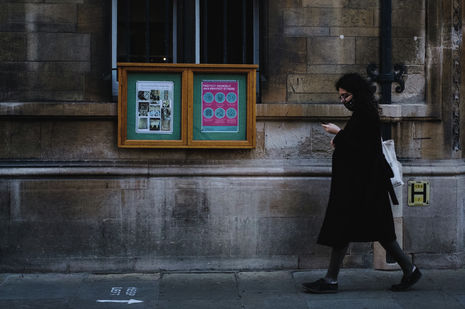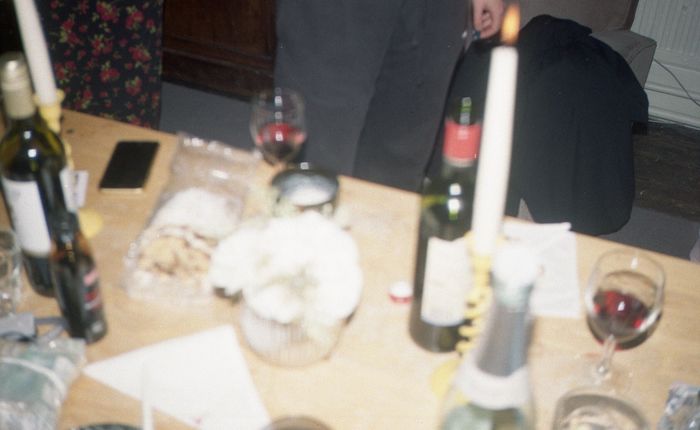Nostalgia-19: The Good Old Days??
Cara Sullivan investigates the strange phenomenon of nostalgia for Lockdown 1. She asks what part that plays in understanding our drastically altered reality
Last April, when lockdown had lost its thrill and the days began melting into one another, nostalgia was the order of the day. On the one hand, this was inevitable. COVID, especially in its early days, stymied the cycle of media production. Concerts were cancelled, filming for TV shows and movies was put on hiatus and recording studios were locked down. Classic rock was my fixation of choice – I listened to Queen, The Beatles, Led Zeppelin and Elvis Presley on repeat – and I wasn’t alone: Spotify data from almost 17 trillion plays reveals a surge of popularity in songs from yesteryear, with lockdown serving as the root cause of our nostalgic hunger. Was the lack of new content our only reason for retreating into the comfort of corny classics?
“...we are still reeling from the effects of the first lockdown...”
In his novel The Dangers of Nostalgia, George. W. Ball defines nostalgia as: “look(ing) backward with a warm glow,” especially if it is considered “less demanding or more rewarding” than our current reality. This warm glow suggests comfort, but anyone who has experienced intense nostalgia may be more inclined to disagree; its etymology comes from Greek nostos ‘return home’ and algos ‘pain’. This bittersweetness is reflected in social media. Tiktok accounts such as “kitchendiseasee” have amassed tens of thousands of followers for posting images of quotidian early 2000s paraphernalia, such as McDonald’s play areas, VHS tapes and childhood toys, set to distorted songs. Often tagged with “dreamcore” or “weirdcore,” the videos are intended not as a simple retreat into nostalgia, but as something that triggers unease. It is nostalgia viewed through a gloomy, post-covid lens, and the comment section reflects this, with a unanimous desire to return to the security of childhood: “Can I please go back,” “God I wish I was a kid again,” “I would do anything to go back to those simple days.”
What is perhaps more interesting is the nostalgia that is cannibalized within the app itself. Soundbites that were popular during the initial lockdown in March are already antiquated, with compilations of wave one era Tiktok sounds warranting comments such as: “why do I miss this?” “This makes me feel a way I can’t describe (…) intense missing” and “this has no business being so nostalgic.” There is a stark contrast between nostalgia for the innocence and security of childhood – epitomised by colourful plastic toys, comfort food and y2k fashion – and the longing for a not-so-distant past that was plagued with disorder and uncertainty.

At first glance, feeling a desire to return to March seems utterly ludicrous. For most of the world, it marked the beginning of the COVID-19 nightmare and is remembered in confused fragments of empty shop shelves, news footage of overcrowded hospitals and a growing body count. So why is it this time, rather than the time just before it, when everything was still ‘normal’ that we yearn for?
A possible explanation is a collective reaction to the trauma of lockdown 1. We don’t want to return to the nauseating uncertainty of the first wave, but rather to make sense of it, to approach it with a sense of control awarded by hindsight. In many ways we are still reeling from the effects of lockdown and attempting to configure it in our minds. Being able to view it in retrospect should allow us to do this successfully, but it doesn’t. We are eleven months into a pandemic, much wearier than we were in March, and it still isn’t over. Trying to make sense of a drastically altered reality is difficult when we are still living in it.
“In our compromised state of being, nostalgia allows us a space to heal.”
Another possibility is the forced acknowledgement that even during the stasis of lockdown, time didn’t wait for us. The wrench that was thrown into our daily lives did nothing to prevent us from ageing and losing months of our lives to confinement, which we have no way of reclaiming. As thankful as I am for the safety of my friends and family throughout the pandemic, I am still hit with waves of sadness when I think about what could have been, had circumstances been normal. We have all had opportunities and experiences jettisoned by the effects of COVID, and it is therefore unsurprising that, to deal with these feelings, we attempt to embody the lost happiness of yore.
At first, I was critical of these feelings. Retreating into consolatory art felt anti-productive, and I wanted to use my lockdown time wisely. Nostalgia pacified me, but its soothing quality was exactly what I needed. Listening to old favourites transported me back to fixed points in my life. I was re-inhabiting memories, memories of lying on sunned grass in July, or walking up a windy coastal path with my headphones in, or sitting in my best friend’s uni room, or being crushed against a metal barrier at a concert, my ribs humming with excitement and bass. In short, nostalgic music transported me away from the four walls of lockdown.
In our compromised state of being, nostalgia allows us a space to heal. Whether we are soothed by warm familiarity, or reminded of a painful time that we survived, one thing is certain: our classic favourites will always be there, ready to provide comfort whenever and wherever we need it.
 Features / How sweet is the en-suite deal?13 January 2026
Features / How sweet is the en-suite deal?13 January 2026 Comment / Will the town and gown divide ever truly be resolved?12 January 2026
Comment / Will the town and gown divide ever truly be resolved?12 January 2026 News / 20 vet organisations sign letter backing Cam vet course13 January 2026
News / 20 vet organisations sign letter backing Cam vet course13 January 2026 Arts / Fact-checking R.F. Kuang’s Katabasis13 January 2026
Arts / Fact-checking R.F. Kuang’s Katabasis13 January 2026 Music / Inside Radiohead’s circle13 January 2026
Music / Inside Radiohead’s circle13 January 2026









